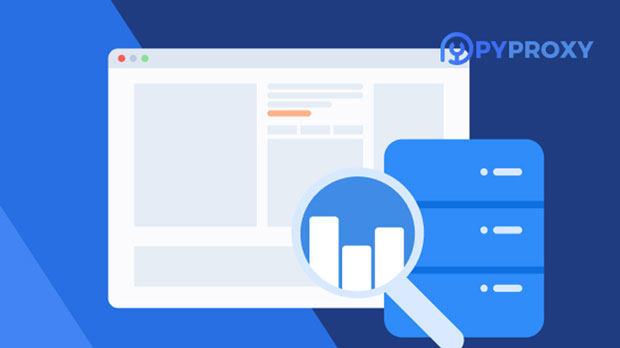In the age of digital interaction, social media has become an essential part of communication, marketing, and personal expression. However, with the growth of social media platforms, there is an increased risk of accounts being banned due to various reasons such as suspicious activities, automated bots, and other violations of platform rules. socks5 proxy, a highly anonymous and secure protocol, has gained attention for its ability to reduce the likelihood of account bans. This article delves into the mechanism of SOCKS5, its advantages, and how it helps users safeguard their social media accounts from being suspended or blocked. What is SOCKS5 and How Does It Work?SOCKS5 is a type of proxy server that acts as an intermediary between a user’s device and the internet. Unlike traditional proxies that route traffic based on specific protocols (HTTP, FTP), SOCKS5 handles any kind of traffic, making it more flexible and secure. When using SOCKS5, the user’s internet requests are sent to the proxy server, which then forwards them to the destination server on their behalf. The target server only sees the proxy's IP address instead of the user's real IP address, making the process more anonymous.The SOCKS5 protocol offers greater flexibility and functionality compared to its predecessors, SOCKS4 and other proxy types. It supports both UDP and TCP connections, making it ideal for a variety of internet activities, including browsing, streaming, and gaming.The Role of SOCKS5 in Reducing Social Media Account BansSocial media platforms monitor user behavior in real-time to detect any unusual activities or violations of their terms of service. These platforms use algorithms to identify suspicious IP addresses, such as those that repeatedly access the platform from different geographic locations within short time frames, or those that are linked to known bots or fraudulent activities. By using SOCKS5, users can mask their IP addresses and appear to be accessing social media platforms from different locations or through secure, non-suspicious connections. This method significantly lowers the risk of account bans. Let’s explore some key ways SOCKS5 can help.1. Anonymity and PrivacyOne of the most significant advantages of SOCKS5 is its ability to mask a user’s real IP address. Social media platforms often track users’ IP addresses to monitor for suspicious behavior, such as multiple logins from different locations in a short period. By routing traffic through a SOCKS5 proxy, the user can appear to be logging in from a different, more legitimate location, which reduces the chances of an account being flagged or banned.Additionally, SOCKS5 provides a high level of privacy, as it does not leak identifying information such as DNS requests, which could be traced back to the user. By concealing these details, the user reduces the chances of being tracked or linked to potentially malicious activities.2. Geo-Spoofing to Prevent Location-Based BlocksMany social media platforms impose geographical restrictions on their services or content. In such cases, users who attempt to access content or services not available in their region may face a ban or restriction. With SOCKS5, users can change their apparent location by selecting proxy servers from different countries or regions. This process, called geo-spoofing, allows users to bypass geo-restrictions and access content without raising suspicion.If a user frequently switches between locations or countries, it can appear less suspicious if the user is using a SOCKS5 proxy to appear to be browsing from different regions. This reduces the risk of account bans linked to multiple, seemingly unauthorized logins from different countries.3. Managing Multiple Accounts Without Getting FlaggedSome users manage multiple social media accounts for business or personal purposes. Social media platforms have strict policies about creating and using multiple accounts from the same IP address to prevent fraud or spamming. However, SOCKS5 makes it easier to manage multiple accounts from different IP addresses, as each account can appear to be logged in from a unique location.By using different sock s5 proxies for each account, users can avoid being flagged for using multiple accounts simultaneously. This practice reduces the risk of account suspension due to activities that appear to be automated or suspicious, such as posting from multiple accounts from the same IP address.4. Enhancing Security and Protecting from HackingSecurity breaches and hacking attempts are common concerns for social media users. With SOCKS5, users can enhance their security by preventing hackers from tracking their original IP addresses. Since the proxy server acts as a middle layer between the user and the internet, any data transmitted through the SOCKS5 proxy is more secure, protecting the user's social media account from potential threats such as hacking, DDoS attacks, or phishing scams.Furthermore, SOCKS5 proxies offer encryption, which adds an extra layer of security to data transmission, making it harder for malicious entities to intercept or track the user’s activities.5. Bypassing IP Bans and Account SuspensionsIf a social media platform identifies an IP address associated with suspicious activity, it may block that IP from accessing the platform, which could lead to account suspension. SOCKS5 helps users bypass these IP bans by providing a new, untraceable IP address for each session.This method is especially useful for users who have faced a temporary suspension due to violations of platform rules, such as excessive automation or spamming. By using SOCKS5, users can regain access to their social media accounts and avoid long-term restrictions, which may affect their ability to maintain an online presence or conduct business.6. Improved Stability and Faster ConnectionsAnother important benefit of using SOCKS5 proxies is the improved stability and speed of internet connections. Unlike other proxies, SOCKS5 is known for its low latency, which ensures a smoother browsing experience. This aspect is crucial for users who rely on social media for real-time communication, such as marketers, influencers, or customer service representatives. Fast and stable connections allow users to engage with their audience or followers more effectively, without worrying about connection drops or delays.Conclusion: SOCKS5 for a Safer Social Media ExperienceSocial media account bans can be detrimental to individuals and businesses, causing loss of reputation, audience, and opportunities. By using SOCKS5 proxies, users can enhance their security, protect their privacy, and reduce the chances of their accounts being flagged or banned. SOCKS5 offers a variety of benefits, from location masking to enhanced privacy and security, making it a powerful tool for those looking to safeguard their online presence.For anyone managing social media accounts, especially those who rely on these platforms for business or personal branding, adopting SOCKS5 can significantly reduce the risks of account suspension. By using SOCKS5, users can continue to enjoy a seamless, secure, and uninterrupted social media experience.
Sep 25, 2025



































































